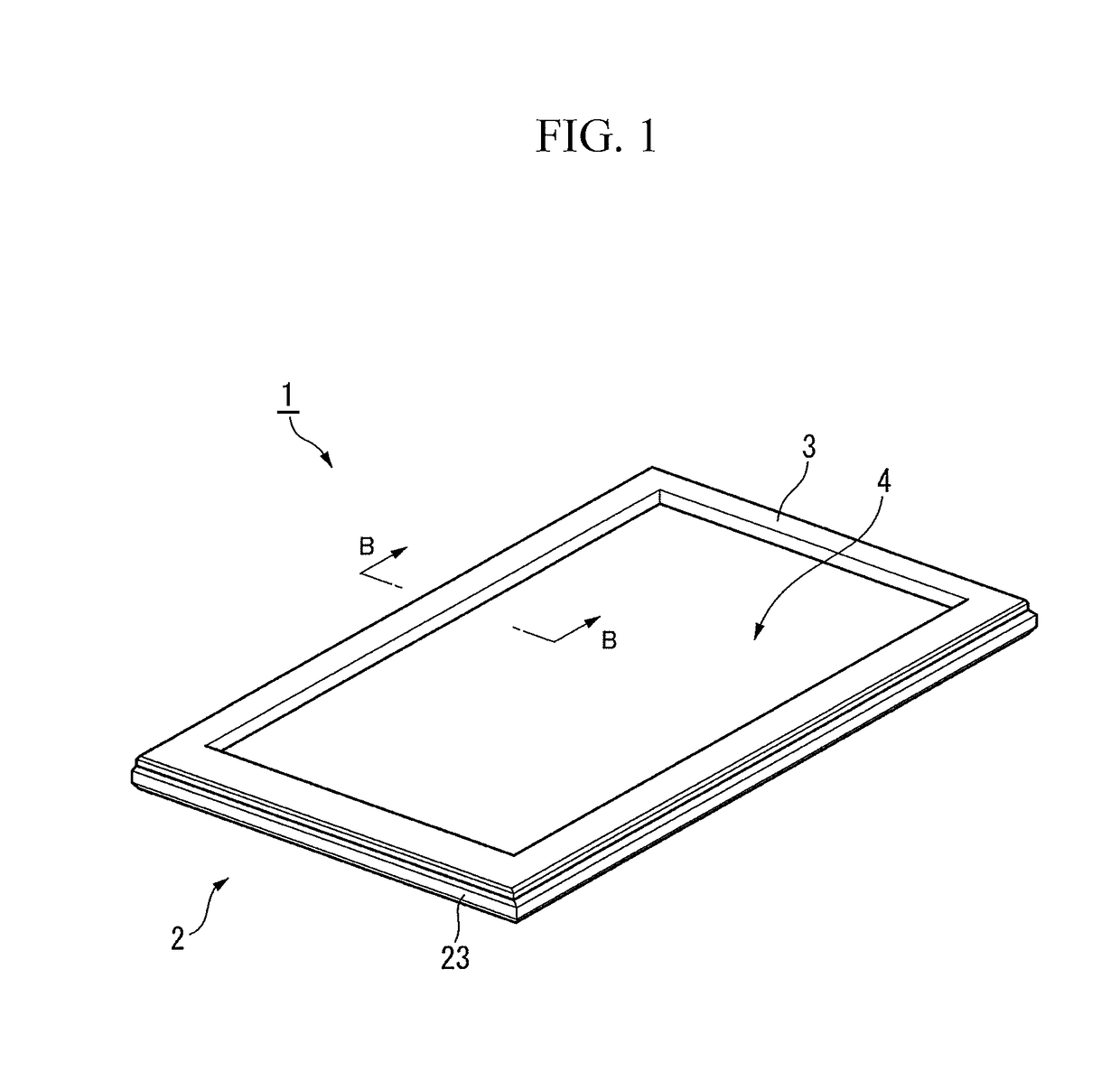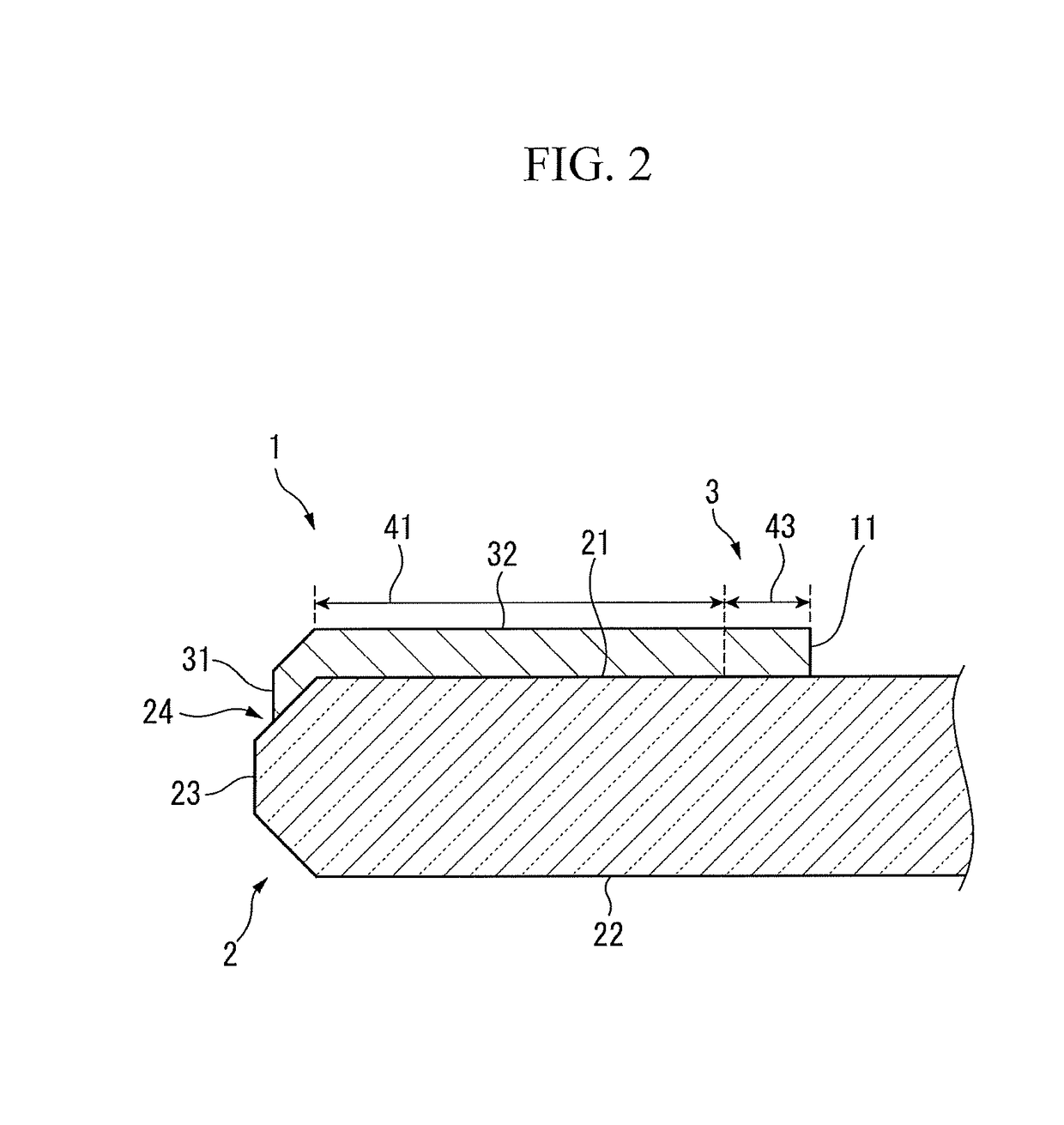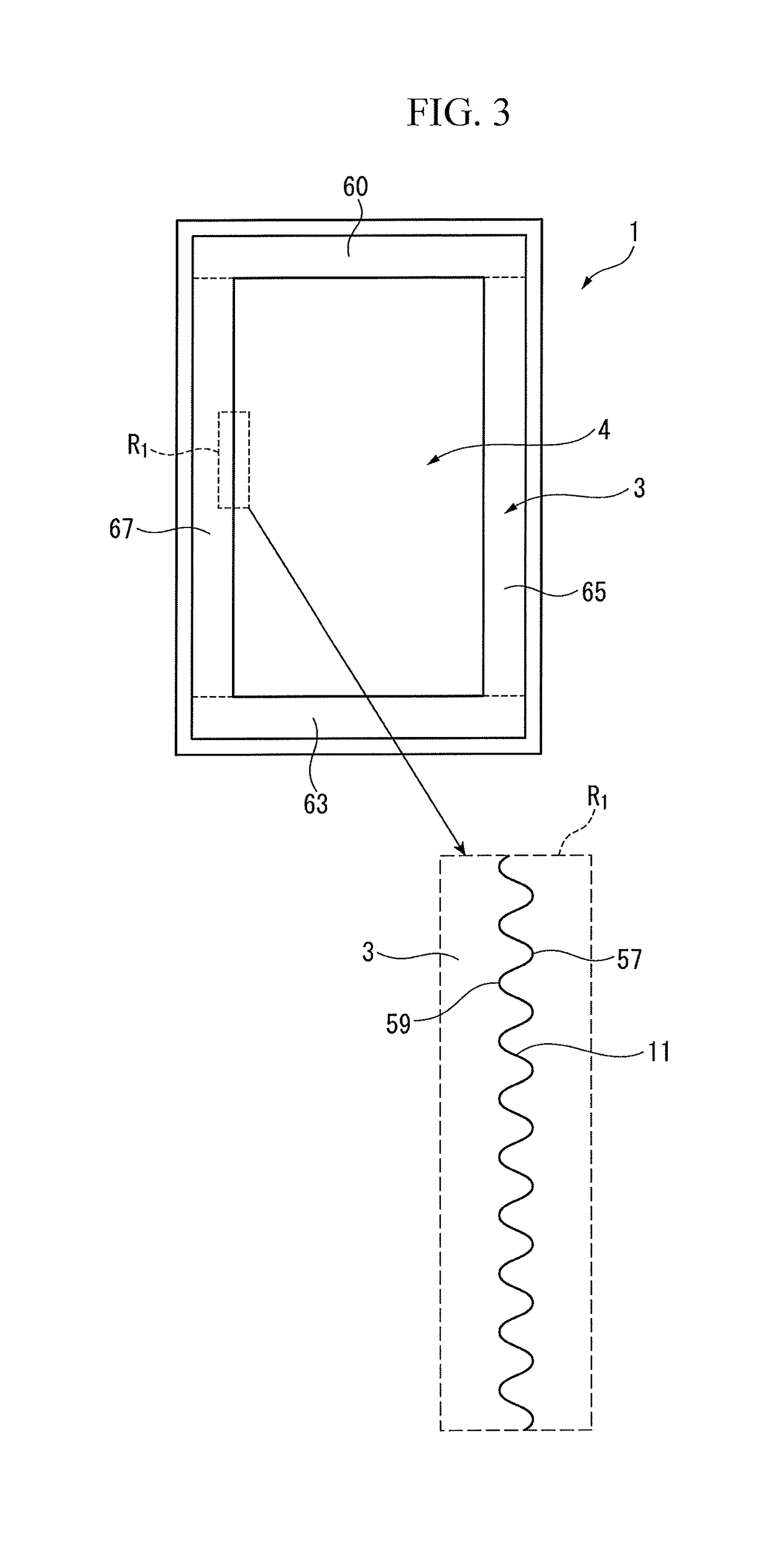Decorative layer-attached transparent plate and display device
- Summary
- Abstract
- Description
- Claims
- Application Information
AI Technical Summary
Benefits of technology
Problems solved by technology
Method used
Image
Examples
modified example
[0147]The present invention is not limited only to the above-described embodiments, and various improvements, design modifications and the like can be made within a range without departing from the gist of the present invention. Specific procedures, structures and the like when carrying out the present invention may adopt other structures or the like within a range where the object of the present invention can be achieved.
[0148]For example, as the transparent plate 2, a plate with various shapes and materials can be used according to applications.
[0149]Examples of the shape may include not only a plate having only the flat surface, but also a plate having a curved face at least on a portion and a plate having a recess. For example, in the case where the transparent plate 2 is made of glass, a bent glass may be used. In the case where a bent glass is used for the transparent plate 2, even when a counterpart member on which the decorative layer-attached transparent plate 1 is mounted ...
example 1
[0188]The glass plate was subjected to treatments of (1) an anti-glare treatment, (2) an end face grinding treatment, (3) a chemical strengthening treatment and an alkali treatment, and (4) a decorative layer formation, in the order. Specific treatments are as follows.
(1) Anti-Glare Treatment
[0189]The second main surface 22 of the glass plate was subjected to an anti-glare treatment by a frost treatment in the following procedure.
[0190]First, an acid-resistant protective film (hereinafter simply referred to as “protective film”) was bonded to a main surface (first main surface 21) of the glass plate on a side not subjected to the anti-glare treatment. The resultant glass plate was immersed in an aqueous solution of 3% by mass of hydrogen fluoride for 3 minutes. Then, the glass plate was etched to remove contaminants adhered to the second main surface 22 of the glass plate. Subsequently, the glass plate was immersed in a mixed aqueous solution of 15% by mass of hydrogen fluoride and ...
example 2
[0201]As illustrated in FIG. 8, only a recess 59 was formed in the vicinity of the inner peripheral corner portion (right upper end portion of the right side decorative layer 65) of the frame in the same manner as in Example 1, except that in (4) decorative layer formation, similarly to Example 1, the printing conditions at a portion forming the waveform was changed such that the printing pitch was narrowed to 50% to 70% and the discharge amount of the ink was also reduced to 30% to 50% in terms of the volume ratio as compared with the other portion not forming a waveform.
[0202]The enlarged view of the inner peripheral corner portion was shown in FIG. 12. In the vicinity of the inner peripheral corner portion of the decorative layer 3, only the recess 59 was formed, the depth L2 was 39 μm, and the full width at half maximum W2 was approximately 100 to 120 μm. From the results, it was found that the recess 59 can be formed by using the ink jet device. The vicinity of the waveform for...
PUM
| Property | Measurement | Unit |
|---|---|---|
| Length | aaaaa | aaaaa |
| Length | aaaaa | aaaaa |
| Length | aaaaa | aaaaa |
Abstract
Description
Claims
Application Information
 Login to View More
Login to View More - R&D
- Intellectual Property
- Life Sciences
- Materials
- Tech Scout
- Unparalleled Data Quality
- Higher Quality Content
- 60% Fewer Hallucinations
Browse by: Latest US Patents, China's latest patents, Technical Efficacy Thesaurus, Application Domain, Technology Topic, Popular Technical Reports.
© 2025 PatSnap. All rights reserved.Legal|Privacy policy|Modern Slavery Act Transparency Statement|Sitemap|About US| Contact US: help@patsnap.com



